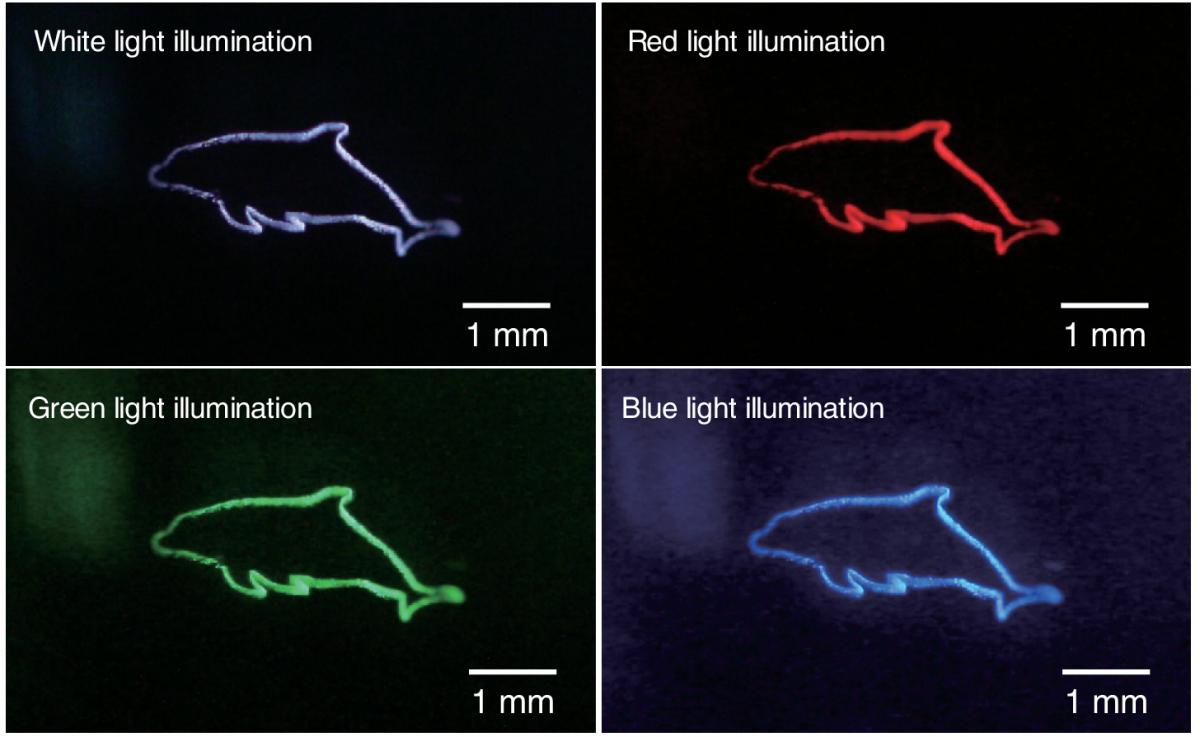Japanese researchers at Utsunomiya University have developed a new type of 3D display that uses a femtosecond laser to form tiny bubbles inside a liquid ‘screen’. The volumetric display allows viewers to see a 3D image from all angles without 3D glasses, and could one day be used to form futuristic exhibits or patient anatomy models in medicine.

The display uses a femtosecond laser to create microbubbles that scatter light to form three-dimensional images in different colours. (Credit: Kumagai et. al)
The researchers demonstrated the display in Optica this month by creating a sequence of 2D bubble images of a mermaid, a 3D rendered bunny, and 2D dolphin graphics in four different colours.
‘Creating a full-colour updatable volumetric display is challenging because many three-dimensional pixels, or voxels, with different colours have to be formed to make volumetric graphics,’ said Kota Kumagai, first author of the Optica paper. ‘In our display, the microbubble voxels are three-dimensionally generated in a liquid using focused femtosecond laser pulses. The bubble graphics can be coloured by changing the colour of the illumination light.’
Although still a proof of concept, the technology could one day enable full-colour updatable volumetric displays. These displays could be then used in art or museum exhibits that viewers would be able to walk all the way around. They are also being explored for helping doctors visualise a patient’s anatomy prior to surgery, or to let the military study terrain and buildings prior to a mission.
‘The volumetric bubble display is most suited for public facilities such as a museum or an aquarium because, currently, the system setup is big and expensive,’ said Kumagai. ‘However, in the future, we hope to improve the size and cost of the laser source and optical devices to create a smaller system that might be affordable for personal use.’
The bubbles in the new display are created using a femtosecond laser via multiphoton absorption, a phenomenon that occurs when multiple photons from a laser combine at a focal point. Microbubbles can be created at very precise locations by moving the focus of the laser to various parts of a high-viscosity, liquid-filled cuvette acting as a ‘screen.’
Monochromatic images can be produced in different colours using the bubbles, depending on the colour of the light source used. According to the researchers, illuminating the graphics with a projector could create different colours in different regions of the image.
The researchers used a computer-generated hologram to form 3D patterns of laser light that let them control the number and shapes of the microbubble voxels. This approach also increases the amount of light scattered from the microbubbles, making the images brighter. It was also shown that microbubble formation depends on the irradiation energy of the laser and that the contrast could be modified by changing the number of laser pulses used to irradiate the liquid.
‘Our bubble graphics have a wide viewing angle and can be refreshed and coloured,’ said Kumagai. ‘Although our first volumetric graphics are on the scale of millimetres, we achieved the first step toward an updatable full-colour volumetric display.’
The researchers are now developing a system that uses a stream inside the liquid to burst the bubbles, allowing the image to be changed or cleared. They are also working on methods that could allow the formation of larger graphics, which requires overcoming spherical aberrations caused by the refractive index mismatch between the liquid screen, the glass holding the liquid, and air.

